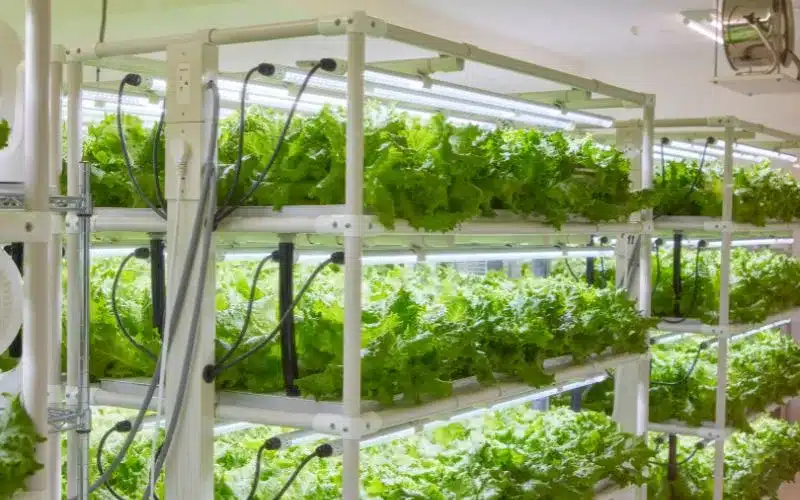
Sustainability in agriculture means more than just going green. It’s about creating systems that meet our food needs without compromising future generations. Sustainable farming focuses on reducing environmental harm, conserving resources, and improving soil health. But when it comes to hydroponics, the game changes entirely. Enter Herb Hydroponics, where plants flourish in nutrient-rich water rather than soil, offering a fresh, efficient approach to sustainable cultivation. This method lets anyone grow flavorful basil, mint, and cilantro year-round while using far less land and water, making eco-friendly eating truly achievable.
Hydroponics allows you to grow herbs in controlled environments using water-based nutrient solutions. No dirt. No weeds. Just efficient indoor farming. This method is particularly well-suited for herbs like basil, mint, and oregano, which thrive in hydroponic systems. By using vertical setups in greenhouses or homes, hydroponics minimizes space while maximizing yield.
Hydroponics is often considered a pillar of sustainable agriculture. It cuts down on water usage, reduces the need for pesticides, and allows for local food production, slashing transportation emissions. These systems can be powered by LED lighting and even solar energy, creating a closed-loop model of efficiency.
Herbs grow fast, don’t need deep root systems, and offer high market value—making them perfect candidates for hydroponics. They also require fewer resources, and their short growth cycles allow for multiple harvests per year. This combination of quick turnover and low input makes hydroponic herb farming a smart, sustainable choice.
Traditional farming methods often rely on synthetic fertilizers, over-irrigation, and monocropping. These practices contribute to soil erosion, climate change, and water pollution. In contrast, hydroponics sidesteps many of these issues.
With a growing population, declining arable land, and worsening climate conditions, we need new food production models. Hydroponics offers a way to produce organic, healthy food in urban settings, closer to where people live.
Herbs are more than seasoning. They play a medicinal and economic role. Grown sustainably, they become part of regenerative agriculture, helping to create a balanced ecosystem and diversify crops.
Hydroponic systems eliminate the need for soil, which means no tilling and no erosion. This preserves precious land for biodiversity or reforestation projects.
Because nutrients are carefully measured and recirculated, there’s minimal runoff. That means no harmful chemicals leaching into rivers and oceans.
Hydroponic herb farming often takes place in urban areas, cutting out long-haul shipping. Plus, no tractors or ploughs needed. That means fewer emissions and a smaller carbon footprint.
Did you know hydroponics uses up to 90% less water than soil-based farming? That’s a huge win for sustainability.
Hydroponic systems recirculate water, meaning the same water is used over and over again with minimal loss to evaporation.
Some setups use fogponics or aeroponics for even greater efficiency. Adding moisture sensors and timed irrigation can further cut down on water waste.
In a controlled indoor space, there’s less chance for pests to invade. This significantly reduces the need for chemical interventions.
When needed, hydroponic systems can use natural predators like ladybugs or neem oil sprays as organic alternatives to traditional pesticides.
Chemical-free herbs aren’t just better for the planet. They taste better, are safer to consume, and meet the growing demand for clean, ethical produce.
These herbs need stable temperatures, moderate humidity, and balanced nutrients (typically nitrogen, potassium, and phosphorus). Most thrive in pH levels of 5.5 to 6.5.
Adjusting light exposure, airflow, and circulation helps boost yield and improve essential oil concentration, which enhances flavor.
Use recycled plastics, bamboo trays, or even upcycled containers. Sustainable doesn’t mean expensive—it means smart.
Monitor and adjust EC (electrical conductivity) levels to reuse your nutrient solution multiple times.
Leftover plant matter? Don’t toss it. Use a small-scale compost system or anaerobic digester to convert it into energy or fertilizer.
Swap out old bulbs for high-efficiency LED grow lights. For bonus points, power your system with solar panels.
Yes, hydroponic systems can cost more upfront. But lower water bills, fewer inputs, and year-round harvests make it pay off over time.
Herbs have high value per gram, short growth cycles, and don’t require heavy fruiting stages. That’s great news for your bottom line.
Shoppers are willing to pay more for sustainably-grown herbs. Market your produce as organic, clean, and locally grown, and you’ll stand out.
Hydroponics can be set up on rooftops, in garages, or in community centers, bringing agriculture into the heart of cities.
Offer subscriptions or local pickups. Let people support your farm directly and get fresh herbs weekly.
Hydroponics is a fantastic teaching tool. Schools and communities can use it to educate kids on sustainability, nutrition, and science.
Lighting, pumps, and climate control eat up electricity. Use LEDs, timers, and energy-efficient appliances to cut consumption.
Where possible, integrate solar, wind, or other renewable energy sources. Look into local grants or incentives.
Costs, knowledge gaps, and technical setup can deter new farmers. Start small and scale gradually. Use open-source guides and community forums.
Many hydroponic nutrients are synthetic or imported. Look into organic blends or even aquaponics to create a more self-sufficient system.
Automation, AI, and IoT sensors are optimizing how we monitor and adjust systems. These tools improve efficiency and reduce waste.
Imagine a hydroponic system that adjusts pH, nutrient flow, and lighting automatically. That future is already here.
Hydroponics allows cities to grow their own food. Herbs, with their high demand and low space requirements, are leading this local food revolution.
Governments are beginning to back indoor farming. From tax breaks to grants, support is growing for those who grow green.
From water savings and reduced chemical use to compact, high-yield growing—hydroponic herb farming checks all the sustainability boxes.
Start with a simple kit. Choose fast-growing herbs. Learn from online communities and scale as you gain confidence.
Collaborate with local businesses. Educate your community. And invest in renewable resources. Every small step adds up to a greener future.